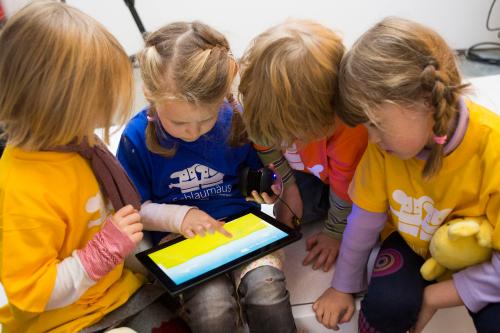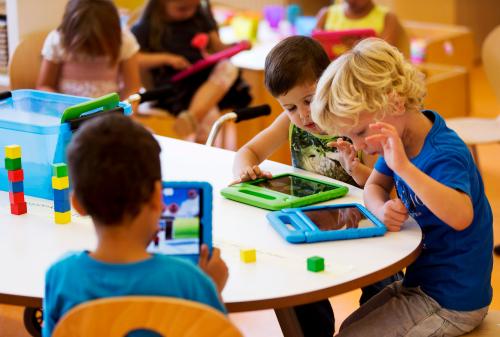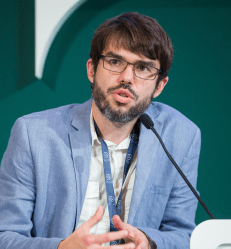In the lead up to the Center for Universal Education’s annual research and policy symposium “Citizens of the Future: Innovations to Leapfrog Global Education” May 21, 2018, guest authors from the education innovations community will contribute their unique insights to this blog series on the topic. Access all of our content on innovations here.
Despite the increased and improved reporting of teachers and schools that are innovating the teaching of new skills and learning goals for the 21st century, schools are largely still seen as very resistent places for innovation. As asseverated by Charles Payne ten years ago, if the emphasis on school reform has witnessed “so little change” it is primarily due to the difficulty of capturing and understanding the daily realities of urban schools. These daily realities include the myriad of scattered, small, and original activities and projects that, as discussed in the OECD’s Innovative Pedagogies for Powerful Learning (IPPL) project, might be the seeds for important transformations when properly aligned and supported.
Teachers are not technicians who implement the educational ideas and approaches of others, but rather professionals able to think about and look for solutions when they face new problems. However, a brief look at the teaching innovation landscape can be both overwhelming and discouraging for most teachers. Overwhelming, the lack of a common international framework of pedagogies results in teachers trying to make sense of the hundreds or even thousands of innovative cases and experiences coming from diverse sources—see, for example, the 2855 innovations cataloged by researchers from the Center for Universal Education. Maybe these 21st century skills and learning goals are increasingly well defined in new projects targeting curriculum reform and incorporated in surveys such as the Programme for International Students Assessment (PISA), but neither the curriculum nor the assessments really tell teachers how to update their practices. This is also discouraging because quite often the way these innovations are showcased revolves around their unique nature, one that is too intertwined to a particular context and makes them difficult to scale up and adapt to realities outside of where they come from.
The IPPL project precisely aims at helping teachers navigate that huge dispersion of promising practices and new approaches. By streamlining groups of practices and experiences and by linking them to particular learning theories, we propose six wide clusters of innovative pedagogies that enable leapfrogging in education through the teaching of new and cross-cutting skills, along with new content.
By starting to think of the relations of teaching and learning around natural learning inclinations like play, emotions, creativity, collaboration, and inquiry, our innovative clusters consciously promote the engagement of learners and match the fundamentals of learning to better understand how people learn best. Not surprisingly, while building up our clusters of innovative pedagogies, I found myself revisiting my past experiences as a primary school teacher in a new light. Acknowledging, for example, how our literature workshops echoed the multiliteracies cluster; or the way a short-film project aligned the principles of embodied learning and digital literacy; or, for that matter, the many, scattered ways in which creativity activities permeated lessons, as when students designed and played their own mathematical games.
Change is a normal part of the teaching profession and not an “extra” that only super motivated and skilled teachers do. Given this, we can use the above examples as leads for innovations to flourish and a significant step to transform teachers as true designers of learning environments, and therefore those more capable of innovation at the classroom level.
Three key areas to promote teaching innovation
In short, we can identify three key areas to promote teaching innovation. First, to envisage the role of teachers as champions in the promotion of more interactive, horizontal, and caring relationships with students. The social and caring nature of learning is the common principle underpinning all of our six clusters, which means that teachers should allocate the time and resources necessary to allow learners to interact and experiment.
Second, teachers need to review their own practices, in order to identify and better align their creative, intuitive and personal capacities with those clusters of innovative pedagogies. Some teachers might incorporate the principles of embodied learning more naturally. They may feel more confident with arts, design, or gamification as a result of having positive personal experiences with using games to learn.
Third, it is paramount to provide the necessary scaffolding structures to make teachers integrate, rather than assimilate, new practices into their repertoire of teaching tools and designs. The IPPL project revolves around the experiences of networks of schools, and shows the important role of explicit or implicit continuous professional development (CPD) programs to foster the skills and self-confidence of teachers for promoting innovation.
When asked about how search engines can challenge the lie-stuffed pages that get pushed to the top of search results, Nate Dame, a search specialist from Propect, answered, “there is no system for the algorithm to filter out truth and reality.” Therefore, our best chance to combat this lies in strengthening the teaching of critical thinking and digital literacy. Maybe it is possible to refine the algorithms Google uses—just think of the potentials of artificial intelligence (AI). But we might only need to connect educators to innovative pedagogies to guarantee that students are ready to deal with the spread of misinformation and become citizens for the 21st century.





Commentary
Innovation in everyday teaching: No more waiting for Superman
February 8, 2018